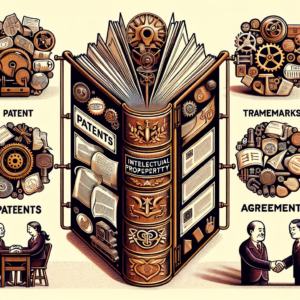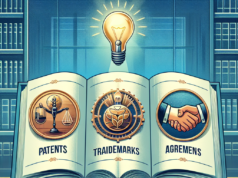
In recent months, the world has witnessed a shocking surge in copyright violations, raising alarms among creators, businesses, and legal experts alike. As digital media continues to proliferate, the ease with which content can be copied and shared has led to an unprecedented increase in infringement cases. This article delves into the key statistics and trends surrounding this issue, explores the impact of digital media on copyright infringement rates, outlines the legal consequences for offenders, and offers essential strategies for protecting intellectual property. Additionally, we will examine the role of technology in copyright enforcement and consider how copyright laws may evolve in response to these rising violations.
Understanding the Recent Increase in Copyright Violations: Key Statistics and Trends
Recent reports indicate a staggering increase in copyright violations, with estimates suggesting that infringement cases have risen by over 30% in the past year alone. According to the U.S. Copyright Office, the number of registered copyright claims has also surged, reflecting a growing awareness among creators of the need to protect their work. The rise in violations is particularly pronounced in the music, film, and publishing industries, where unauthorized distribution and streaming have become rampant. A survey conducted by the International Intellectual Property Alliance revealed that nearly 70% of creators have experienced some form of copyright infringement, highlighting the urgent need for effective measures to combat this trend.
The Impact of Digital Media on Copyright Infringement Rates: A Closer Look
The digital revolution has fundamentally transformed the way content is created, distributed, and consumed, leading to a significant rise in copyright infringement rates. With the advent of social media platforms, streaming services, and file-sharing websites, users can easily access and share copyrighted material without proper authorization. This accessibility has blurred the lines between legitimate use and infringement, making it increasingly difficult for creators to enforce their rights. Furthermore, the anonymity provided by the internet often emboldens individuals to engage in copyright violations, as the perceived risk of detection and punishment remains low. As a result, the digital landscape has become a breeding ground for copyright infringement, prompting urgent calls for reform.
Legal Consequences of Copyright Violations: What Offenders Face in 2023
In 2023, the legal landscape surrounding copyright violations remains stringent, with offenders facing severe consequences. Copyright infringement can result in both civil and criminal penalties, including hefty fines and potential imprisonment. Civil lawsuits can lead to statutory damages ranging from $750 to $30,000 per work infringed, with the possibility of increased damages for willful infringement. Additionally, repeat offenders may face criminal charges, which can result in fines up to $250,000 and imprisonment for up to five years. As enforcement agencies ramp up their efforts to combat copyright violations, individuals and businesses must be aware of the legal ramifications of their actions to avoid costly repercussions.
Protecting Your Intellectual Property: Essential Strategies for Creators and Businesses
In light of the rising tide of copyright violations, it is imperative for creators and businesses to adopt proactive strategies to protect their intellectual property. One essential step is to register copyrights with the appropriate authorities, as this provides legal recognition and strengthens the ability to pursue infringement claims. Additionally, employing digital rights management (DRM) technologies can help control access to and distribution of copyrighted content. Creators should also consider utilizing watermarking techniques to deter unauthorized use and enhance traceability. Furthermore, educating employees and collaborators about copyright laws and best practices can foster a culture of respect for intellectual property, reducing the likelihood of unintentional violations.
The Role of Technology in Copyright Enforcement: Innovations and Challenges Ahead
Technology plays a dual role in the realm of copyright enforcement, serving both as a tool for protection and a facilitator of infringement. On one hand, advancements in artificial intelligence and machine learning have enabled copyright holders to monitor and detect unauthorized use of their content more effectively. Automated systems can scan the internet for infringing material, allowing for swift takedown requests and legal action. On the other hand, the same technologies that enable enforcement can also be exploited by infringers to circumvent protections. For instance, sophisticated algorithms can be used to alter copyrighted content slightly, making it difficult for detection systems to identify violations. As technology continues to evolve, copyright enforcement will need to adapt to these challenges while leveraging innovations to safeguard intellectual property.
Future Outlook: How Copyright Laws May Evolve in Response to Rising Violations
As copyright violations continue to rise, there is a growing consensus among legal experts and policymakers that copyright laws must evolve to address the challenges posed by the digital age. Potential reforms may include updating existing legislation to better reflect the realities of online content sharing and distribution. This could involve creating clearer guidelines for fair use, enhancing penalties for repeat offenders, and establishing more robust mechanisms for international cooperation in enforcement efforts. Additionally, there is a push for greater transparency in the algorithms used by platforms to manage copyrighted content, ensuring that creators have a fair opportunity to protect their work. As the landscape of copyright infringement shifts, ongoing dialogue among stakeholders will be crucial in shaping effective and equitable copyright laws for the future.
The shocking surge in copyright violations underscores the urgent need for creators, businesses, and legal systems to adapt to the rapidly changing digital landscape. By understanding the trends and implications of this increase, individuals can take proactive steps to protect their intellectual property while navigating the complexities of copyright law. As technology continues to advance, the future of copyright enforcement will depend on innovative solutions and collaborative efforts to ensure that creators’ rights are upheld in an increasingly interconnected world.


























